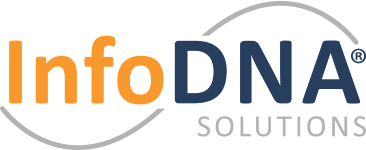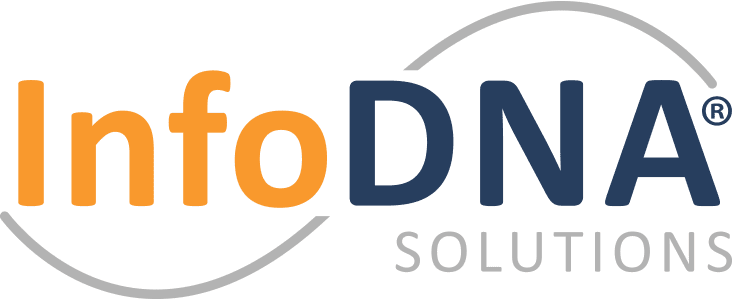
Organizations – generally the largest of the large – have invested a lot in on-premises ECM solutions over the last 15-20 years to attempt to realize the ‘paperless’ workplace and look to better automate. But with the inevitable evolution of the market and the announcement by Gartner 3 years in the “Death to Enterprise Content Management” blog, it has caused an entire market to take a <PAUSE>.
Legacy ECM Problems
However, when CTOs and IT professional started looking at what exactly was changing, Gartner’s arguments clearly made sense. The biggest shift in the enterprise space had happened slowly but surely and content services was the obvious outcome for those trying to manage their data. That shift, of course, was the cloud.
There were other technologies coming into the enterprise and the digital workplace was starting to become a reality. This resulted in problems that legacy enterprise content management (ECM) systems just couldn’t solve. As content management evolves toward the cloud with an increasing focus on agility and innovation, businesses that rely on ECM face a fork in the road.
Based on research by Nuxeo showed that in financial services firms, average knowledge workers are dedicating 11% of every day to finding content locked up in separate systems. Multiplied over thousands of workers and hundreds of workdays, these tasks create a productivity drain that costs enterprises tens or even hundreds of millions of dollars.
This is not new though and over the years research report after report has identified the inability to access the right information at the right time as one of the major issues facing enterprises. There are many practical solutions to manage this problem but, let’s outline four principles that enterprise should consider.
- Platforms Vs. Solution Suites – Traditional ECM software typically started with one solution, becoming a suite as mergers and acquisitions, as well as internal product development, brought new solutions to the fold.
- Universal Content vs. Documents and Data – Too many legacy ECM vendors simply don’t understand the magnitude of — or can’t catch up with — this massive diversification of content.
- Cloud Natives Vs. Cloud Newcomers – Cloud is everywhere, now with the promise of better uptime and fewer security vulnerabilities than traditional on-premises deployments. Now, ECM vendors must scramble to get cloud-ready
- Upgrades vs. Continuous Development – As previously mentioned, ECM vendors must scramble to get cloud-ready. However retrofitted result often looks like trying to force a square peg into a round hole.
Moving From Legacy ECM
There are many ECM problems which are encouraging more and more businesses to make the move from legacy software to more modern alternatives. So how do you know that you have a problem? A Technology Evaluation Center (TEC) post at the end of 2017 offers this list of criteria to assess whether you should be moving away from this older, cumbersome systems:
- It doesn’t do everything you ask it to do
- Performance problems
- The technology fix isn’t in
- You want to stay competitive
- Lack of external support
- Lack of internal support
- User unfriendliness
- Lack of mobility
Updating older software, rather than replacing, is a relatively viable option that companies often choose. It can still be a good idea if a business is running an older, homegrown ECM system, and has the internal resources and knowledge to bring it up to today’s operational standards (in our experience, this is rare).
 This is also true if the software vendor has committed to doing so and the timeline is reasonable. After all, updating an older ECM will avoid the complex challenges of data conversion that come with replacement. But with the advent of digital transformation, updating may not be worth it. Newer applications are built on better architecture, that can be updated to last well into the future. “If ever there was a time to drop idiosyncratic, older systems that don’t support your business needs, and adopt more modern business software, this is it,” she said.
This is also true if the software vendor has committed to doing so and the timeline is reasonable. After all, updating an older ECM will avoid the complex challenges of data conversion that come with replacement. But with the advent of digital transformation, updating may not be worth it. Newer applications are built on better architecture, that can be updated to last well into the future. “If ever there was a time to drop idiosyncratic, older systems that don’t support your business needs, and adopt more modern business software, this is it,” she said.
For many content-driven businesses, a well-equipped ECM solution is the single biggest key to overall digital transformation. This alone legitimizes the replace option as a serious contender. It should also be kept in mind that a good, modern ECM tames and digitizes huge and disparate collections of information; facilitates far better collaboration on content creation; uses AI to greatly enhance search, categorization, and reporting capabilities; and offers wider integration options for devices and other enterprise software systems.
 Migrating to a new platform – the challenge
Migrating to a new platform – the challenge
Many legacy ECM systems were designed 10, 20 or even 30 years ago (who remembers WORM disks), when enterprise technology was much different. Having one (or more likely) many of these systems, that traditionally use older, closed sourced technology, results in several key business challenges. Finding employees with the skills and willingness to learn out of date APIs and archaic programming languages is becoming harder and harder, making it extremely difficult to develop and evolve the legacy platforms to meet current business needs.
Today, most organizations are looking to use cloud computing as it offers lower running costs, dynamic scale and ease of deployment without the need to over provision technology inside the data center. So, what to do with legacy systems?
While migrating the data and content from legacy systems is relatively easy these days (thanks to many automated tools), migrating to a single, new cloud ready ECM solution is hard. Why? There is the big issue of all of the legacy applications that are running on the old platforms, affecting many parts of the business. Trying to move all of these applications would be expensive, time consuming and risky. The top issues?:
- Bad meta-tags and metadata
- Bad (or non-existent) taxonomies
- Non-viable records plan
- Duplication of different versions of the same document
- ROT (Redundant, Obsolete, Trivial)
With InfoDNA and the Topla Intensify solution, you can automatically recognize this across heterogeneous repositories into a single view – a virtual ‘collection’. From this effort, a more reasonable repository strategy can be realized with a single version of the truth, maximized searchability and a defensible governance strategy in this time of greater privacy and regulation.


